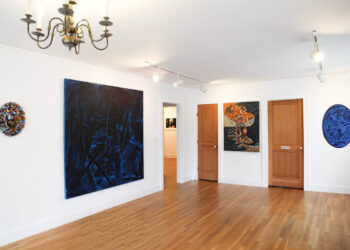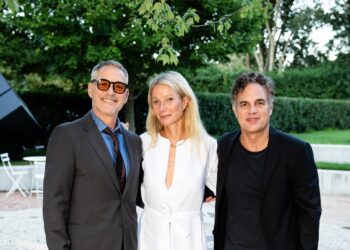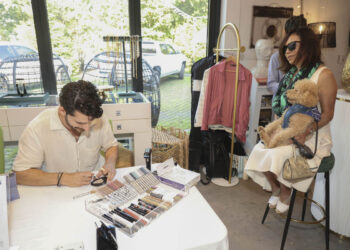The East Hampton Historical Society is set to debut Living Well is the Best Revenge: A Jazz Age Fable of Sara and Gerald Murphy at the Clinton Academy Museum. The exhibition will run from Saturday, August 6th through Monday, October 10th, and an Opening Reception will take place on Friday, August 5th from 6 p.m. to 8 p.m.
“This exhibition is about one of America’s most extraordinary couples of the 20th century,” said Richard Barons, Executive Director of the East Hampton Historical Society and curator of Living Well Is The Best Revenge: A Jazz Age Fable of Sara and Gerald Murphy. “Sara Wiborg met Gerald Murphy on an East Hampton beach at the turn of the 20th century. They fell in love, married and tried to fit into restraints of their upper class upbringing.” Living Well is the Best Revenge: A Jazz Age Fable of Sara and Gerald Murphy follows the couple’s relationship, starting with when they first met in the Hamptons.
 |
|
Gerald and Sara Murphy on La Garoupe Beach, Antibes, summer 1926. (Photo: Sara and Gerald Murphy Papers, Yale Collection of American Literature, Beinecke Rare Book and Manuscript Library. © Estate of Honoria Murphy Donnelly/Licensed by VAGA, New York, NY) |
Gerald and Sara Murphy are considered by many to be one of the most beautiful couples of the 1920s. The Murphys have influenced many art and literature heroes such as F. Scott Fitzgerald’s Tender Is the Night, Ernest Hemingway’s A Moveable Feast, Philip Barry’s play Hotel Universe, John Dos Passos’ Big Money, and Pablo Picasso’s neoclassical masterpiece Woman in White. The show will feature archival photographs, paintings, decorative arts, clothing, memorabilia, and ephemera.
Their love story began at a party in East Hampton when Gerald Murphy was 16 and Sara Wiborg was 21. At the time, Golden Age millionaires were only just beginning to build mansions along the East End, and Sara’s parents, Frank Wiborg and Adeline Wiborg (who made their fortune from his Cincinnati printing-ink and varnish company, Ault & Wiborg), built the Dunes, which was presumed to be the largest East Hampton estate. Gerald also came from a prestigious family. His father Patrick helped expand saddle maker Mark W. Cross’ product line and purchased the firm at the death of Mr. Cross. The elder Murphy moved the business to New York City, which is when it became famous for its high quality leather goods.
They became engaged in 1915 when Sara was 27 and Gerald was 22, though neither of their parents were pleased with the decision. On December 30, 1915, the teenage sweethearts were married, 11 years after they met.
“They were artistic and had avant-garde tastes. Gerald Murphy painted some of the most important pre-Pop Art canvases our national museum’s own and Sara designed the costumes for a Cole Porter ballet,” explained Barons. “They lived well, dressed beautifully, introduced the French to how young Americans enjoyed a day at the beach and they collected houses that they furnished in a style all their own.”
In June of 1921, the Murphys set off for Europe in search of a more artistic life. They became enraptured with The Jazz Age of the 1920s and spent the decade living on the French Riviera with their three children in their house called Villa America. After returning to America in the 1930s, their life took a different route. The family’s once legendary 600 acres of prime oceanfront real estate in East Hampton had shrunk due to enormous financial burden. The couple’s East Hampton abode, The Dunes, was demolished in 1941 after they couldn’t land buyer or renter. Following the demolition, the Murphys made a dairy barn their new home. They renovated it to a Normandy style and called it Swan Cove. After selling that property in 1959, the Murphys bought La Petite Hutte, a smaller home.
Today, the Murphy’s legacy lives on with their grandchildren, who gifted the Museum with nine old file boxes filled with Wiborg family papers that have been curated into an engaging and remarkable exhibition. It’s a story of love, travel, family and building a life.
“This is a story you will not see in any local museum this season,” added Barons.
Normal exhibition hours are Saturday from 10 a.m. to 5 p.m. and Sunday from 12 p.m. to 5 p.m. There will be no admission charged, but donations are much appreciated.
The Clinton Academy Museum is located at 151 Main Street in East Hampton. For more information, call 631-324-6850 or visit www.easthamptonhistory.org.






